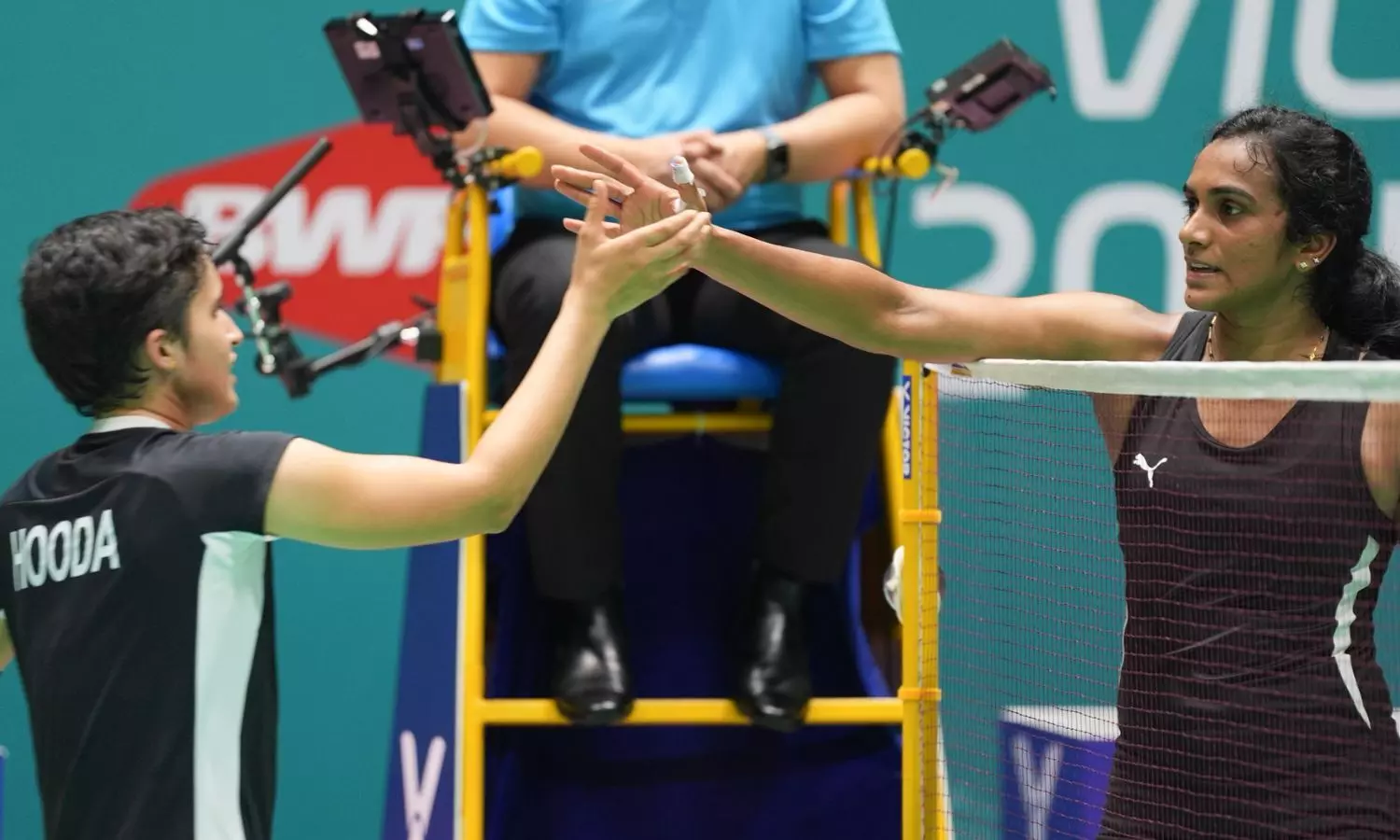Badminton
"It was too late to cover that”: PV Sindhu falls to Unnati Hooda at China Open
Unnati Hooda stuns PV Sindhu at the China Open 2025, becoming the first Indian to beat her in seven years.

At the China Open 2025, Indian badminton entered a new chapter. PV Sindhu, a figure synonymous with consistency, global medals, and national pride, was defeated by 17-year-old Unnati Hooda in a dramatic Round of 16 clash.
It marked the first time since 2017 that Sindhu had lost to a fellow Indian, and this one came with a heavy weight of symbolism.
The 21-16, 19-21, 21-13 win was not just about numbers on the board. It was a match where India’s present met its future — and the future, for a moment, stood taller.
Hooda’s composure defines the moment
Playing her first China Open, Hooda looked fearless. She struck early, winning the first game 21-16.
Sindhu, ever the fighter, clawed her way back in the second. But in the final game, Hooda’s calmness, length of rally, and ability to reset after a frustrating middle phase made all the difference.
“I didn’t expect that I would win today,” said Hooda afterwards. “But I came with the thinking that I’ll give my all, whatever the result. I kept my patience level with myself in the third game and was ready to play long rallies.”
She spoke candidly about how she had used up both Hawkeye challenges early in the second game — a decision that backfired at a crucial moment. But her recovery was mature, methodical.
“This win is surprising for me too, but I’m happy I was able to pull through,” she said.
Sindhu: “She took a lead and maintained that”
PV Sindhu, who has long carried the weight of Indian badminton on her shoulders, didn’t shy away from accepting the challenge she faced on court.
“It was hard to control the shuttle,” she said post-match. “In the third game, she took a lead and maintained that. To cover that… it was too late.”
Sindhu, reflective rather than rattled, credited her opponent. “She had some lucky points — net cords at crucial moments. But she’s doing well, she’s coming up. It’s good for the Indian women’s team.”
Asked about the wider context of rising Indian players like Hooda, Sindhu added:
“Indian badminton is picking up and doing really well. Many more girls like her are coming up — it’s a good sign.”
The result is more than a headline. It signals a shift. Sindhu is still India’s most decorated shuttler, a two-time Olympic medallist with a legacy that spans a decade. But the nature of elite sport is evolution, and Hooda’s arrival on this stage offers evidence that the system is nurturing its next tier.
There will be no immediate comparisons. Hooda is still raw, still finding her rhythm on the world stage. But her game, aggressive, composed, and unflinching under pressure, suggests something substantial.
Sindhu may yet have her resurgent moments. Athletes of her pedigree often do. But in this moment, her own words speak volumes. It wasn’t just that she lost. It was that, for once, it was too late to cover that.
And in that moment, Indian badminton looked not to the past, but to what comes next.

